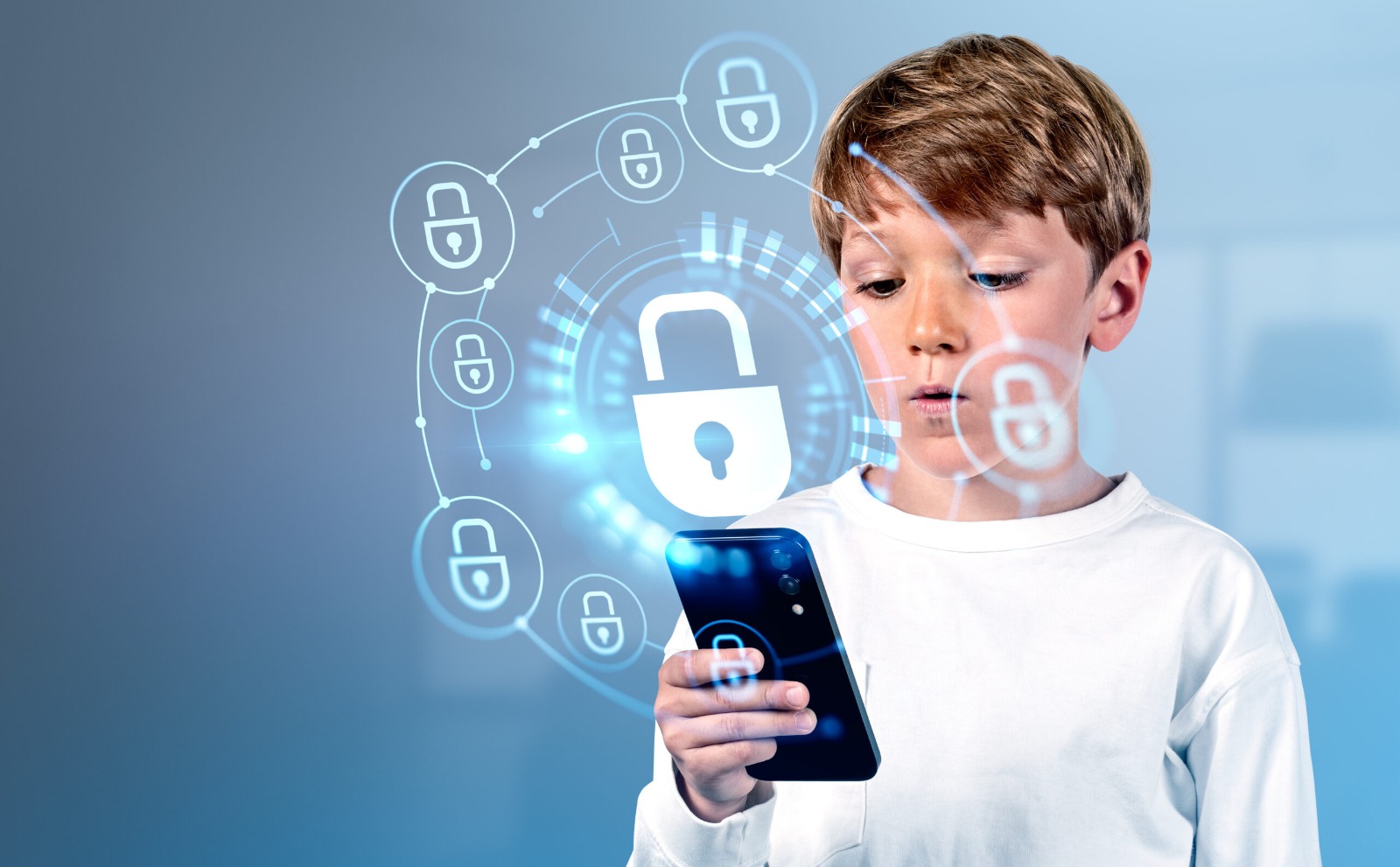
Why Passwords Are Dying (and What Will Replace Them)
Passwords, once the backbone of digital security, are rapidly becoming obsolete due to human error, data breaches, and sophisticated cyberattacks. As the world embraces safer, faster, and more convenient alternatives like biometrics, passkeys, and decentralized identities, the era of memorized codes is ending. The passwordless future promises both stronger protection and seamless user experiences across all digital platforms.
✨ Raghav Jain

The Death of the Password: A Necessary Evolution
For decades, passwords have served as the digital keys to our online lives. From unlocking email accounts to accessing online banking, social media, and workplace systems, they’ve been the first line of defense. Yet, in today’s interconnected world, passwords have become both a burden and a liability. As cybercrime grows more sophisticated, the very system designed to protect users has become one of the weakest links in cybersecurity.
According to data from cybersecurity firms like Verizon and IBM, over 80% of data breaches involve stolen or weak passwords. The average user juggles more than 100 passwords across different platforms, often resorting to unsafe practices like reusing passwords, using simple combinations, or storing them insecurely. Despite the availability of password managers and two-factor authentication (2FA), human behavior remains the most exploitable vulnerability in the digital chain.
The password was never meant to last this long. When MIT’s Compatible Time-Sharing System (CTSS) introduced the concept in 1961, only a handful of users shared a mainframe computer. No one could have imagined a future with billions of people logging into thousands of interconnected systems daily. Today, passwords have outlived their utility—and the digital world is finally ready to move beyond them.
Why Passwords No Longer Work
1. Human Error and Convenience
The greatest flaw in passwords lies in human nature. People choose convenience over security—using “123456,” “password,” or their birthdate. When forced to create complex combinations, they often forget them, leading to frequent resets or unsafe storage practices (like sticky notes on desks or saved files named “passwords.txt”).
2. Phishing and Credential Theft
Phishing attacks have grown increasingly deceptive. Fake login pages and malicious emails trick users into revealing credentials. Even multi-factor authentication (MFA) can be bypassed through social engineering or SIM-swapping attacks. Once credentials are stolen, attackers can access not just one account but entire digital ecosystems linked to that identity.
3. Data Breaches and Credential Dumps
Every year, millions of passwords are leaked from major companies—LinkedIn, Yahoo, Adobe, and others. Once stolen, these credentials are sold on the dark web, reused across accounts, and exploited through brute-force or credential-stuffing attacks.
4. Weak Password Management Systems
Password managers were designed to solve the complexity problem, but even they are not foolproof. Breaches targeting password management services (like LastPass in 2022) show that centralized storage creates a single point of failure.
5. The Scale Problem
In enterprise environments, managing access for thousands of employees, contractors, and devices is an administrative nightmare. Constant password resets, policy enforcement, and credential recovery processes cost organizations millions annually.
The verdict is clear: passwords are failing both users and organizations. The digital world is now embracing a new paradigm—passwordless authentication.
The Rise of Passwordless Authentication
Passwordless systems aim to eliminate the need for memorized credentials altogether. Instead, they rely on something you are (biometrics), something you have (a device), or something you do (behavioral patterns).
Here’s how this transformation is unfolding:
1. Biometric Authentication
Biometric systems use unique physical traits—like fingerprints, facial recognition, or iris scans—to verify identity. Apple’s Face ID and Touch ID, and Android’s fingerprint sensors, have made biometrics mainstream.
- Advantages: Fast, unique, and hard to replicate.
- Limitations: Privacy concerns and potential for spoofing (e.g., deepfakes or lifted fingerprints).
However, when paired with secure on-device processing (like Apple’s Secure Enclave or Google’s Titan M chip), biometrics offer one of the strongest forms of user authentication available today.
2. Hardware Security Keys
Devices like YubiKeys and Google’s Titan Security Key provide physical two-factor authentication. Users plug or tap the key to verify identity.
- Advantages: Immune to phishing and password theft.
- Limitations: Requires physical possession of the key; potential loss or damage can be an issue.
These keys use public-key cryptography, meaning no secret password is stored or transmitted—making them nearly impossible to intercept.
3. Passkeys: The Future of Login
In 2022, major tech giants—Apple, Google, and Microsoft—announced the rollout of passkeys, a new standard developed by the FIDO Alliance (Fast IDentity Online).
Passkeys work by creating a pair of cryptographic keys: one public (stored on the server) and one private (stored securely on the user’s device). Authentication happens through biometrics or a device PIN, and the private key never leaves the device.
This means users can sign in using their face, fingerprint, or PIN—without ever typing a password.
- Advantages: Resistant to phishing, data breaches, and credential reuse.
- Adoption: Services like PayPal, eBay, Amazon, and Google accounts already support passkeys.
4. Behavioral Biometrics
Beyond fingerprints and face scans, behavioral biometrics analyze patterns like how you type, move your mouse, or hold your smartphone. These micro-behaviors are unique and continuously authenticated, meaning even if someone gains temporary access to your device, anomalies can trigger alerts or access denials.
5. Zero-Trust Architecture
The corporate cybersecurity world is moving toward zero-trust frameworks, which operate under a simple rule: “Never trust, always verify.”
Rather than granting blanket access once logged in, every access attempt—no matter how small—is verified through multiple, context-aware factors like device reputation, location, and user behavior.
Zero-trust eliminates blind spots created by traditional password-based access and aligns perfectly with a passwordless future.
The Security and Privacy Balancing Act
While passwordless authentication offers better protection, it introduces new challenges. For instance:
- Privacy: Storing biometric data (even locally) raises ethical and legal concerns.
- Accessibility: Not everyone owns devices capable of biometrics or passkey functionality.
- Adoption Lag: Businesses using legacy systems face steep transition costs.
- Dependence on Devices: Losing a smartphone could temporarily lock users out of multiple services.
To mitigate these issues, hybrid models combining biometrics, device tokens, and backup recovery systems are becoming standard. Governments and tech alliances are also drafting global standards to ensure interoperability and user control.
What Will Replace Passwords Entirely?
The future of authentication is likely to be multi-layered, invisible, and secure by design. Here are the leading contenders:
1. Passkeys as the New Default
Passkeys will become the universal replacement for passwords. With Apple, Google, and Microsoft’s support, users can log in seamlessly across devices through synchronized credentials backed by biometric verification.
2. Decentralized Digital Identities (DIDs)
Built on blockchain, decentralized identity systems put control back in the user’s hands. Instead of relying on centralized servers, users store their identity credentials securely on their own devices or wallets. They can choose which data to share and with whom—reducing corporate data collection and breach risks.
3. Continuous Authentication
Future systems may rely on continuous identity verification—constantly assessing factors like typing rhythm, device motion, and geolocation to ensure the right person remains logged in.
4. AI-Driven Authentication
AI models can detect anomalies and suspicious patterns in real-time—like unusual login times or locations—triggering adaptive security measures.
The combination of AI, biometrics, and cryptographic standards promises a future where logging in feels seamless, safe, and personalized.
The Passwordless Future: Convenience Meets Security
Imagine unlocking every digital service you use—banking, shopping, work platforms—just by glancing at your screen or touching a sensor. No more password resets, phishing alerts, or endless email verifications.
That’s the world passkeys, biometrics, and zero-trust systems are building. The shift won’t happen overnight, but by 2030, passwords as we know them may largely disappear.
Organizations are already adopting “passwordless by design” architectures, while governments like the U.S. and EU are encouraging FIDO-based authentication as part of national cybersecurity strategies.
The end of the password isn’t just a technological evolution—it’s a cultural one, transforming how humans interact with the digital world.
For over six decades, passwords have been the cornerstone of digital authentication, guarding everything from social media accounts to billion-dollar corporate databases. Yet, as we step deeper into 2025, experts agree that passwords have become not just outdated—but dangerously insecure. The average internet user today manages over a hundred passwords, leading to unsafe habits like reusing the same one across multiple sites or writing them down in plain text. This human tendency toward convenience has created a massive loophole for cybercriminals. In fact, according to Verizon’s Data Breach Investigations Report, nearly 81% of hacking-related breaches involve weak or stolen passwords. As technology advanced, so did cybercrime, and the password—the same mechanism invented in the early 1960s for limited access to shared computers—could no longer keep pace with the hyperconnected, AI-driven digital world. The result is a staggering number of identity thefts, credential leaks, and unauthorized access incidents that cost individuals and companies billions annually.
The real problem lies in the way passwords rely on human memory and discipline, both of which are inherently flawed. People choose predictable passwords, like “123456” or “qwerty,” or they base them on easily guessable personal details. Even when forced to adopt complex combinations, users often write them down or save them insecurely. Cybercriminals exploit this by deploying phishing campaigns, keyloggers, and credential-stuffing attacks—all aimed at stealing login information. Once a single password is compromised, attackers can often infiltrate multiple systems, thanks to the widespread habit of reusing credentials. Even modern security practices like multi-factor authentication (MFA), though helpful, are not immune to sophisticated attacks like SIM swapping and MFA fatigue, where users are tricked into approving fraudulent login attempts.
The situation is exacerbated by the constant flow of data breaches. Major corporations like LinkedIn, Yahoo, and Adobe have suffered breaches exposing billions of user credentials. Once leaked, these passwords circulate on the dark web, often sold for mere dollars. Despite repeated warnings and password manager tools, many users still underestimate the risk. Password managers, while convenient, create a centralized point of failure—if hacked, they expose all stored credentials. The irony is clear: the very system designed to secure digital identities has become the easiest to exploit. In a world where artificial intelligence and quantum computing are emerging, brute-forcing passwords is faster and easier than ever before.
Recognizing these dangers, the cybersecurity world is embracing a revolution known as passwordless authentication. Instead of relying on what you know (a password), new systems authenticate users based on what you are (biometrics), what you have (a device or token), or what you do (behavioral patterns). Biometrics—such as fingerprint scans, facial recognition, and even voice analysis—have already become commonplace on smartphones and laptops. These systems use advanced encryption and on-device processing to verify identity without transmitting sensitive data across networks. Companies like Apple and Google have taken this a step further with Face ID, Touch ID, and Android Biometric Unlock, making biometric authentication not only secure but intuitive. Meanwhile, hardware security keys, such as YubiKeys and Google Titan Keys, provide physical authentication by generating unique cryptographic codes that are virtually impossible to replicate.
But the most revolutionary change is the introduction of passkeys, a technology jointly developed by Apple, Google, and Microsoft under the FIDO Alliance. Passkeys eliminate the need to remember or type passwords entirely. They use public-key cryptography, where one key remains private on your device and another public key resides on the server. When you log in, the system verifies your identity by matching these keys—without ever revealing your credentials. Because there’s no password transmitted or stored, hackers have nothing to steal. Passkeys also make phishing obsolete, as fake websites cannot trick users into entering secret information. Already, major platforms like PayPal, Amazon, and eBay support passkeys, and industry analysts predict that within the next five years, passkeys will become the global standard for online authentication.
Another fascinating evolution is the rise of behavioral biometrics, which continuously monitor subtle user behaviors like typing rhythm, touchscreen pressure, and mouse movement. These invisible signals help systems confirm that the person using a device remains the rightful owner—even after initial login. It’s a seamless layer of ongoing security that doesn’t interrupt the user experience. Beyond that, enterprises are shifting toward Zero-Trust Architectures (ZTA), a security model that assumes no user or device is inherently trustworthy. Every access attempt, even from within a company network, must be authenticated and verified dynamically. Together, these technologies mark the end of the password era and the dawn of identity systems that are both secure and user-friendly.
As passwords fade into obsolescence, the digital world is exploring a new landscape where identity verification becomes continuous, decentralized, and intelligent. One of the biggest shifts driving this transformation is the adoption of decentralized digital identities (DIDs). Built on blockchain technology, DIDs empower users to control their own credentials without depending on centralized servers or corporate databases. Instead of storing your data in a company’s system (where it can be hacked), you keep it in a secure digital wallet on your device. Whenever a website or service needs to verify your identity, you share only the minimum information required—ensuring both privacy and security. This model, often referred to as self-sovereign identity, could redefine digital trust in the coming decade. It eliminates the need for passwords entirely, replacing them with verifiable credentials backed by cryptographic proof.
Another promising development is continuous authentication—an approach where your identity is verified not once, but constantly, based on your ongoing behavior and environment. For instance, AI-powered systems can detect if someone else picks up your phone or laptop by analyzing changes in typing cadence, gait, or even ambient sound. If an anomaly is detected, access is restricted automatically. This invisible layer of protection ensures security without burdening users with repetitive logins. Meanwhile, AI-driven threat detection adds another dimension by learning from millions of data points to identify suspicious activities like login attempts from unusual locations or devices. Instead of waiting for a breach to occur, AI systems proactively block risks before they escalate.
Despite its advantages, the passwordless future isn’t without challenges. Privacy advocates raise legitimate concerns about biometric data misuse and centralized control. If fingerprints or facial data are ever compromised, they cannot be “reset” like passwords. To address this, companies are increasingly using on-device encryption and federated identity systems, ensuring sensitive data never leaves the device. Accessibility is another concern—millions of users still rely on basic devices that may not support biometrics or passkey features. To ensure inclusivity, hybrid systems that combine biometrics, hardware tokens, and traditional credentials are being developed. Regulatory frameworks like the EU’s GDPR and the U.S. National Cybersecurity Strategy are also evolving to standardize how passwordless systems operate globally.
Yet, the movement toward passwordless technology continues to gain unstoppable momentum. By 2030, analysts expect that most major organizations will adopt “passwordless by default” security architectures. The benefits go beyond safety—passwordless logins are faster, reduce IT costs, and improve user satisfaction. Enterprises no longer have to spend millions resetting forgotten passwords or combating phishing schemes. Consumers, meanwhile, enjoy a smoother, safer experience—unlocking apps, websites, and financial services with a glance or touch. The convergence of biometrics, AI, and encryption will ultimately create a digital ecosystem where identity verification feels as natural as breathing—frictionless, secure, and personalized.
This transition also represents a broader cultural evolution. For years, the relationship between humans and technology has been defined by barriers—passwords, PINs, and verification codes that separate users from their data. The passwordless movement breaks those barriers down, fostering a more intuitive bond between people and their digital environments. It marks the end of frustration, password fatigue, and vulnerability. Instead of remembering endless combinations of characters, users will rely on their unique biological and behavioral signatures—something no hacker can steal or duplicate easily. Governments and corporations alike are recognizing this shift as essential for national security and digital trust. Initiatives like the FIDO2 standard and WebAuthn protocols are leading the charge toward global interoperability, ensuring that the same secure authentication works across browsers, platforms, and devices.
Ultimately, the demise of passwords is not just about cybersecurity—it’s about redefining digital identity itself. The systems replacing them—biometrics, passkeys, decentralized IDs, and AI verification—are designed to protect not just accounts, but individuals. They promise a world where data breaches become rare, online fraud plummets, and digital interactions become seamless and human-centered. In that world, logging into a bank account, workplace system, or healthcare app won’t require memory—it will simply recognize you for who you are. Passwords served their purpose well, but their time is over. The future belongs to authentication methods that are smarter, stronger, and simpler—heralding a new era of digital trust where technology works silently, securely, and effortlessly in the background.
Conclusion
The death of passwords marks a turning point in cybersecurity history. The shift toward passwordless authentication—driven by innovations like passkeys, biometrics, and AI-powered verification—signals a safer, smarter digital future. As users and organizations adapt, they’ll not only enhance protection but also reclaim simplicity and confidence in their online experiences.
The password era is ending—not with a bang, but with a seamless tap, scan, or smile.
Q&A Section
Q1: Why are passwords considered outdated in 2025?
Ans: Because they’re vulnerable to theft, phishing, and human error. Most breaches stem from weak or reused passwords, making them ineffective against modern cyber threats.
Q2: What is replacing passwords?
Ans: Technologies like passkeys, biometrics, hardware security keys, and decentralized digital identities are replacing passwords, offering greater security and convenience.
Q3: What are passkeys, and how do they work?
Ans: Passkeys use cryptographic key pairs—one stored on your device and one on the server. They verify identity using biometrics or a PIN, eliminating the need for typed passwords.
Q4: Are biometrics completely secure?
Ans: While difficult to replicate, biometrics still carry privacy and spoofing risks. However, when combined with on-device encryption, they’re far safer than passwords.
Q5: Will passwords disappear completely?
Ans: Not immediately, but within the next decade, passwordless authentication will dominate, making traditional passwords largely obsolete in mainstream systems.
Similar Articles
Find more relatable content in similar Articles

Digital DNA: The Ethics of Gen..
Digital DNA—the digitization a.. Read More

Protecting Kids in the Digital..
In an increasingly connected w.. Read More

Data Centers and the Planet: M..
As cloud computing becomes the.. Read More

Wearable Health Sensors: The D..
Wearable health sensors are re.. Read More
Explore Other Categories
Explore many different categories of articles ranging from Gadgets to Security
Smart Devices, Gear & Innovations
Discover in-depth reviews, hands-on experiences, and expert insights on the newest gadgets—from smartphones to smartwatches, headphones, wearables, and everything in between. Stay ahead with the latest in tech gear
Apps That Power Your World
Explore essential mobile and desktop applications across all platforms. From productivity boosters to creative tools, we cover updates, recommendations, and how-tos to make your digital life easier and more efficient.
Tomorrow's Technology, Today's Insights
Dive into the world of emerging technologies, AI breakthroughs, space tech, robotics, and innovations shaping the future. Stay informed on what's next in the evolution of science and technology.
Protecting You in a Digital Age
Learn how to secure your data, protect your privacy, and understand the latest in online threats. We break down complex cybersecurity topics into practical advice for everyday users and professionals alike.
© 2025 Copyrights by rTechnology. All Rights Reserved.